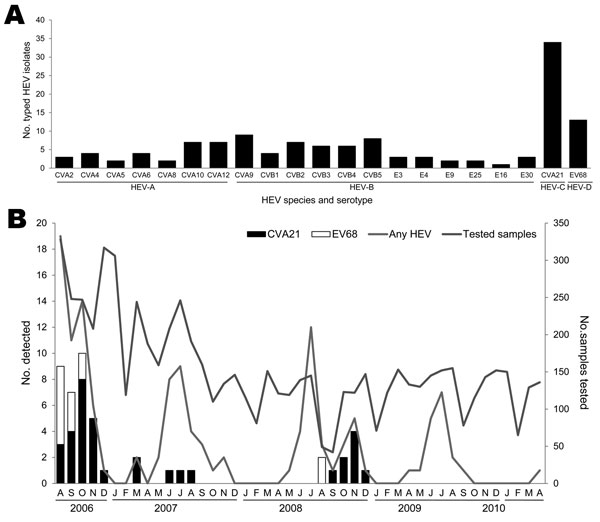Volume 18, Number 5—May 2012
Dispatch
Coxsackievirus A21, Enterovirus 68, and Acute Respiratory Tract Infection, China
Figure 1

Figure 1. . . Frequency of human enterovirus (HEV) serotypes detected among adult patients by using sequence analysis of a partial viral protein 1 gene, in Beijing, People’s Republic of China, August 2006–April 2010. A) Number of patients detected for each HEV serotype; B) Seasonal distribution of the HEVs in adults with acute respiratory tract infection. Numbers of samples tested in each month during the study period are shown on the right-side y-axis. CV, coxsackievirus; E, echovirus; EV, enterovirus.
Page created: April 12, 2012
Page updated: April 12, 2012
Page reviewed: April 12, 2012
The conclusions, findings, and opinions expressed by authors contributing to this journal do not necessarily reflect the official position of the U.S. Department of Health and Human Services, the Public Health Service, the Centers for Disease Control and Prevention, or the authors' affiliated institutions. Use of trade names is for identification only and does not imply endorsement by any of the groups named above.